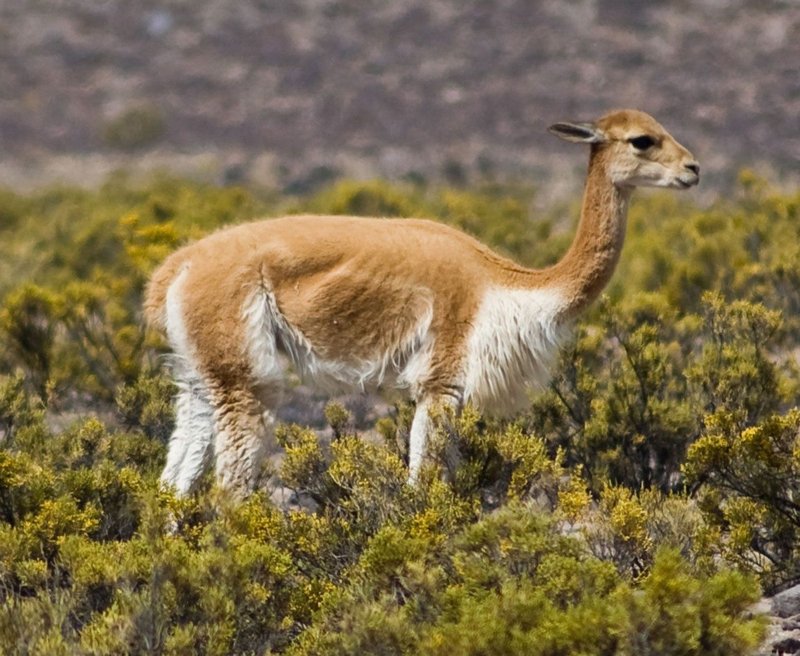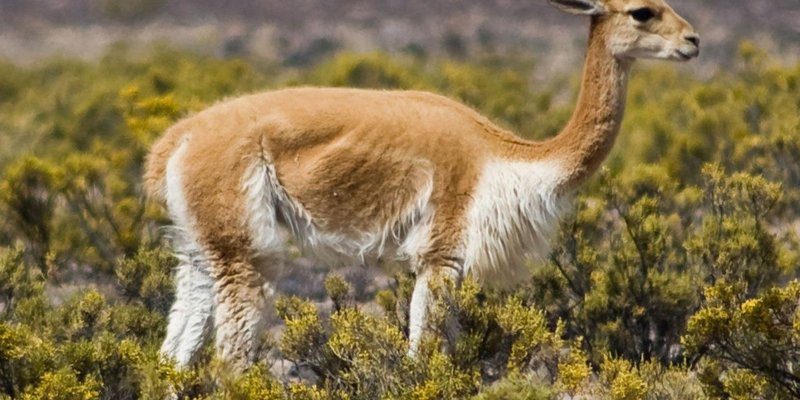
In many ways, the vicuña is like the unsung hero of the Andes. Known for its soft wool and incredible adaptations to life at high altitudes, this animal helps maintain the balance of its ecosystem. Understanding the vicuña’s role really opens our eyes to the intricate connections within nature, making us appreciate how every species has its place and purpose.
What is a Vicuña?
Before we go deeper into the vicuña’s role in its ecosystem, let’s take a moment to understand what a vicuña really is. These animals are native to the Andes, primarily found in countries like Peru, Bolivia, Argentina, and Chile. Standing 30 inches tall at the shoulder, they’re a bit smaller than llamas and are highly valued for their incredibly soft wool, which is considered one of the finest in the world.
Vicuñas live in herds, usually made up of females and their young, while males maintain territories. They mainly graze on grasses and other plant materials, which keeps them healthy and energetic. What’s fascinating is how these animals can adapt to oxygen levels that are much lower than what we’re used to at sea level.
The Vicuña’s Grazing Impact
The vicuña’s diet consists mainly of grasses and other vegetation found in the high-altitude regions. By grazing on these plants, they play an important role in shaping the plant communities of their habitat.
Here’s the thing: when vicuñas graze, they help maintain grassland health. Their selective feeding habits encourage the growth of certain plant species, leading to greater biodiversity. Without animals like the vicuña, some plant species could dominate an area, reducing overall ecological diversity.
Plus, vicuñas naturally fertilize the soil as they graze, thanks to their droppings, which are rich in nutrients. This fertilization supports the growth of plants and creates a healthier ecosystem. It’s like they’re nature’s gardeners, helping the landscape thrive.
Vicuñas and the Food Chain
Every creature in an ecosystem is interconnected, and the vicuña is no exception. They serve as prey for various predators, including pumas and Andean condors. By being a food source for these animals, vicuñas help sustain the balance of the food chain.
This relationship is crucial because if vicuñas were to disappear, it wouldn’t just affect them; it would ripple throughout the ecosystem. Predators would struggle to find food, which could lead to a decline in their populations. It’s a domino effect where one change can impact many.
Additionally, vicuñas can also influence the behavior of other herbivores in their ecosystem. For instance, when they graze in an area, it often encourages other animals to do the same, which can help keep the plant community diverse and healthy.
Vicuñas and Climate Resilience
The vicuña is exceptionally adapted to survive in harsh climates, and this ability plays a vital role in ecosystem resilience. They can withstand extreme temperatures, ranging from freezing nights to warm days, by utilizing their thick, insulating wool.
This adaptation helps them thrive and continue their essential ecological roles, even when conditions change due to climate fluctuations. Vicuñas help highlight how certain species can thrive in challenging environments, and their presence can indicate the overall health of the ecosystem.
Moreover, their ability to adapt can inspire conservation efforts aimed at protecting vulnerable species in similar habitats. If we can understand how vicuñas manage in the face of climate change, we might unlock strategies to help other species do the same.
Conservation Challenges of the Vicuña
Despite their important role, vicuñas face several challenges that threaten their populations. Overhunting, habitat loss, and climate change are significant threats. Their fine wool has historically led to illegal poaching, putting immense pressure on their numbers.
Efforts to conserve vicuñas are underway, and they include legal protection and sustainable management practices. By raising awareness about their ecological importance, we can help ensure that these animals thrive for generations to come. Conservation isn’t just about saving a species; it’s about preserving the whole ecosystem they support.
Understanding the vicuña’s role can empower communities and governments to take action, promoting not only the safeguarding of the vicuña but also the health of the entire Andean ecosystem.
The Importance of Biodiversity
So, here’s the big takeaway: protecting the vicuña and its ecosystem is essential for maintaining biodiversity. Biodiversity refers to the variety of life in a particular habitat, and it’s critical for ecological balance. The vicuña, as part of this web of life, helps sustain various plant and animal species, contributing to a healthy ecosystem.
When we think about biodiversity, we often picture colorful coral reefs or lush rainforests, but high-altitude ecosystems like the Andes are just as vital. Each species plays a role, and the loss of one can unbalance the whole community.
By focusing on species like the vicuña, we can appreciate the broader picture of how interconnected our world is. Every animal, plant, and microorganism contributes to the tapestry of life, and losing one thread can unravel the entire fabric.
The vicuña is more than just a beautiful animal; it’s a cornerstone of its ecosystem. From maintaining grassland health to being a crucial part of the food web, vicuñas play a vital role that enhances biodiversity and supports ecological balance. Understanding and valuing their role can inspire conservation efforts and help protect the delicate ecosystems they inhabit.
In caring for the vicuña, we’re not just helping a single species; we’re supporting a whole community of life in the Andes. So the next time you think about these lovely creatures, remember their importance in keeping our planet healthy and vibrant. Together, we can ensure that this unique animal and its rich ecosystem continue to thrive for generations to come.

